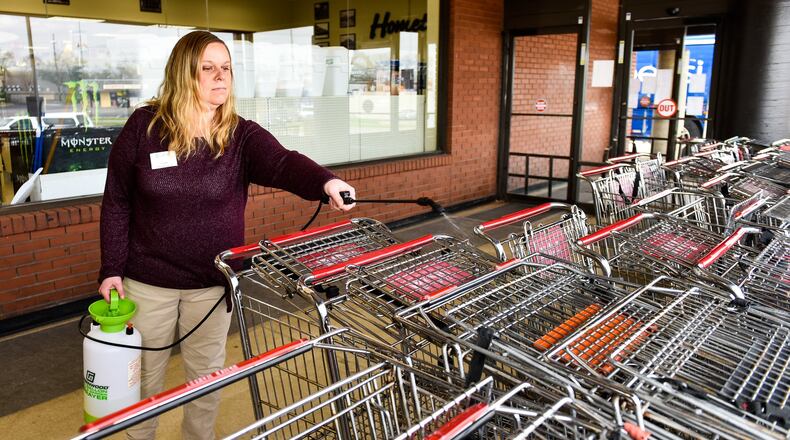“I think everybody should be mindful that we cannot go back to the way it used to be,” she said. “I am certain that this virus will probably stay around for a while, if not going into the fall. If you look at some of the modelings, they’re suppressing the virus, but the virus never goes away.”
CORONAVIRUS: Business retools to make PPEs for health workers, first responders
Ohio Gov. Mike DeWine and Ohio Department of Health Amy Acton have taken unprecedented measures to blunt the impact the virus may have all at once on the health care system. Measures were similar to what other states have implemented, from moving the presidential primary to shutting down schools and forcing several types of businesses to close or limit services temporarily. But the disease is expected to continue to spread, if only more slowly.
“What we have tried to do each and every day is to try to tell you what we do, what we know and when we know it, and to get that information out to you as quickly as we can,” said DeWine on Thursday during his daily coronavirus press conference.
He said the initial projections, which showed a dire situation if next-to-nothing was done, are much different because Ohioans are doing what’s been asked of them.
“Ohioans have made a difference, we’ve made a huge difference,” said DeWine. “Ultimately, it’s about what each and every one of you does and does not do. And by and large, Ohioans have done a bang-up job.”
But the work Ohioans have put into flattening the curve needs to continue, Phillips said, including continually disinfecting high-touch surfaces and handwashing, and social distancing even when health officials declare the pandemic over.
“I’m not saying not to go to large gatherings, but we’re going to be more mindful that large crowds give us more of a means of being infected by anything,” she said. “I think our hygiene practices, and our gathering practices should look a little different.”
The Cleveland Clinic — one of the medical facilities providing COVID-19 infection predictive modeling — advocates following the Ohio health department’s stay-at-home order, and safety guidelines outlined by the Center for Disease Control and Prevention.
“There is evidence that these actions have started to make a real impact on the spread of the infection,” according to a statement from the Clinic.
CORONAVIRUS: Widespread testing to start at state prisons with virus
Cleveland Clinic Medical Director of Enterprise Analytics Dr. James Simon said since this is the first time the world has seen the COVID-19 virus, “We do not have a lot of data to go by.”
He compares the modeling done by several organizations, including the Ohio State University, to a hurricane tracker that would show the storm taking different paths, "but as time goes by, and as they gather more information, often times the models will come closer together and agree, and that's exactly what's happening here."
“Each of those models is taking the information that we learn day by day and incorporating that back into the model to improve its forecasting,” he said.
The Ohio State University Response Modeling Team released a paper on its modeling approach, saying, “Just as in any computational modeling effort, there are many approaches and methods to choose from to model emerging epidemics. Different methods are suited to different situations in terms of data, scenarios, conditions and urgency.”
A Washington University model predicts Ohio's day-to-day increases in hospitalizations and deaths are at its peak now, and the state should see numbers decline in the days and weeks to come.
DeWine said models showed statistical projections that forecast much higher tolls because they were created assuming Ohio and the country did nothing or very little to slow the spread.
“The modelers didn’t think we were going to do as good a job as we did,” the governor said. “They didn’t think Ohioans would do this.”
Phillips said public health diligence is needed, which she said will be the new normal. But her worry is when flu season comes back in the fall later this year.
“If you look at some of the modelings, they’re suppressing the virus, but the virus never goes away,” she said.
About the Author




